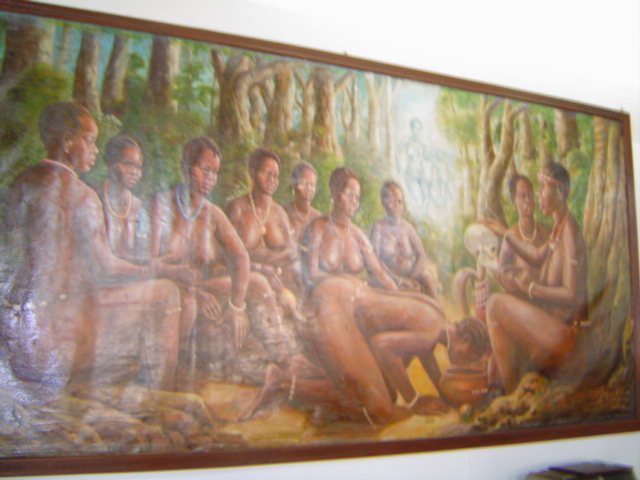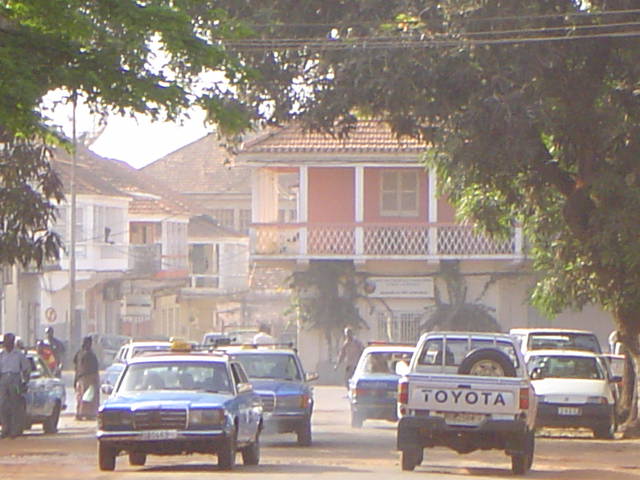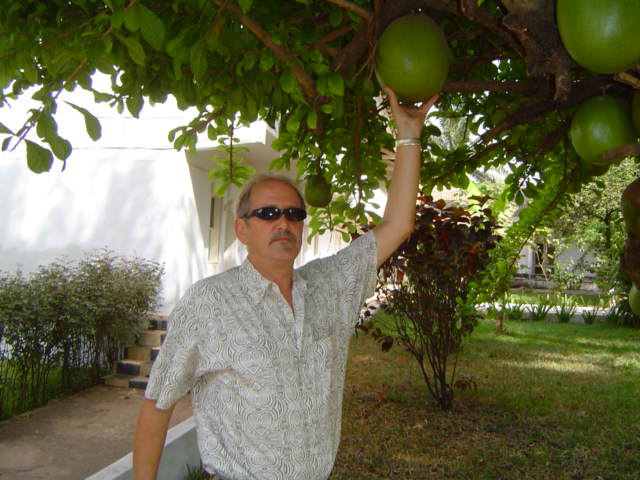|
Guinea-Bissau is a gem with sleepy towns, quiet beaches and beautiful offshore islands. The 200 km long coast is very rugged and has difficult access. If you want to see how colonialism has effectively bombed a country in its struggle to independance, Guinea-Bissau is the place. Port city Bissau is the capital of Guinea-Bissau, and has good transportation facilities through canals. The city has a wharf and pier and an enlarged harbor. The city also has an international airport and is home to a university and a research institute. The climate is hot and tropical and alternates between the dry season and rainy season. The national language is Portuguese and 40 % of the population is Muslim, and 60 % practice indigenous religions. There are 23 ethnic groups, and the main ones are Balante and Fula.

Ph©to2004
©Willem Tijssen
|

Ph©to2004
©Willem Tijssen
|

Ph©to2004
©Willem Tijssen
|

Ph©to2004
©Willem Tijssen
|

Ph©to2004
©Willem Tijssen
|
Economy:
Guinea-Bissau is one of the poorest countries in the world. Agriculture employs 76 % of the labour force, and producing maize, manioca and rice for the internal market. The main products for export are Cashew nuts, ground nuts and seed oil. Guinea Bissau is the world second largest Cashew exporter. Drought is a major threat to agriculture in Guinea Bissau. Guinea-Bissau's economic performance that improved in 1997 was severely disrupted by the political and social unrest, which erupted in June 1998. The uprising caused a serious setback for Guinea-Bissau. Real GDP fell by 28% in 1998.
History:
Guinea-Bissau, a small country on the West African coast with about 1.2 million inhabitants. In 1687, it was a Portuguese post and a slave-trading center. Guinea Bissau was first occupied by Portuguese navigators in 1446, and for the following five centuries was exploited by Portugal as a colonial power. The Portuguese did nothing to build infrastructure or emancipate the people. In 1956, under the guidance of a dynamic and well-prepared leader, Amilcar Cabral, a nationalist movement was formed which became the African Party for the Independence of Guinea and Cape Verde PAIGC. The region remained under Portuguese control through the colonial times until Guinea-Bissau's independence in 1973 after a protracted liberation war. However, true independence only came when the Portuguese withdrew in the following year. The war resulted in the dislocation of about one-fifth of the population and the destruction of important economic infrastructure. Yield from the country's main crops was reduced by over one-third. Assistance from the World Bank, the International Monetary Fund (IMF), and other bilateral and multilateral donors, has played an important role in supporting Guinea-Bissau's social and economic development since then, particularly after 1983.
Guinea-Bissau was the first ex-Portuguese colony to become independent on the 24th September 1973, when it unilaterally declared its independence. Its status was recognised by the UNO one month later, and finally by Portugal in 1974. In 1975, the Cape Verde islands became part of the federation of Guinea.. This objective was halted by a coup in 1980 in Guinea-Bissau in which General Joao Bernardo Vieira replaced Luiz Cabral as President. In 1991, laws was passed on the formation of political parties and in December 1991, the post of Prime Minister, abolished in 1984, was restored. The National Assembly also voted to hold elections in 1992. They were however postponed due to organisational difficulties. After many arrests and attempted coups, the elections were finally held in 1994, and were declared fair by independent observers. Joao Bernardo Vieira was confirmed as President, but only in the second round. On 7 June 1998, the country was plunged into crisis by an army mutiny. Troops from Senegal and Guinea were called in to help forces loyal to President Vieira. The capital, Bissau was left nearly deserted by the heavy fighting. On 26 July 1998, both sides signed a Memorandum calling for a cease fire and the opening of negotiations. In August, a ceasefire was agreed at Praia, Cape Verde but on 17 October, after a partial withdrawal of Senegalese troops there was renewed fighting. Many refugees left the country. The Economic Community of West African States (ECOWAS) intervened and a peace agreement was reached on 1 November. Since the agreement an uneasy truce has existed. Both sides have agreed on a new Prime Minister (Francisco Fadul). A ceasefire agreement was quickly signed on 3 February 1999 and an ECOMOG peacekeeping force was deplyed in the country. A new Government of National Unity was sworn in on 20 February.
All foreign forces have now left Guinea Bissau and ECOMOG soldiers are in place. Since then the situation has remained calm. Guinea-Bissau was closely allied with the Soviet Union for aid and followed Marxist policies until 1986 when there was an attempted coup. The Government began looking to the West for help. Guinea-Bissau is a member of the UNO and a member of ECOWAS (Economic Community of West African States) and the CPLP (Community of Portuguese Speaking Countries). Guinea-Bissau joined the UEMOA (the Monetary Union of the West African Franc Zone countries) on 31 March 1997 and the CFA franc replaced the Guinean Peso in May 1997.
Enabling us to improve the quality of the content, if you have additonal information, remarks or suggestions, please share it with us by e-mail.
Last update: 14 April 2008
|